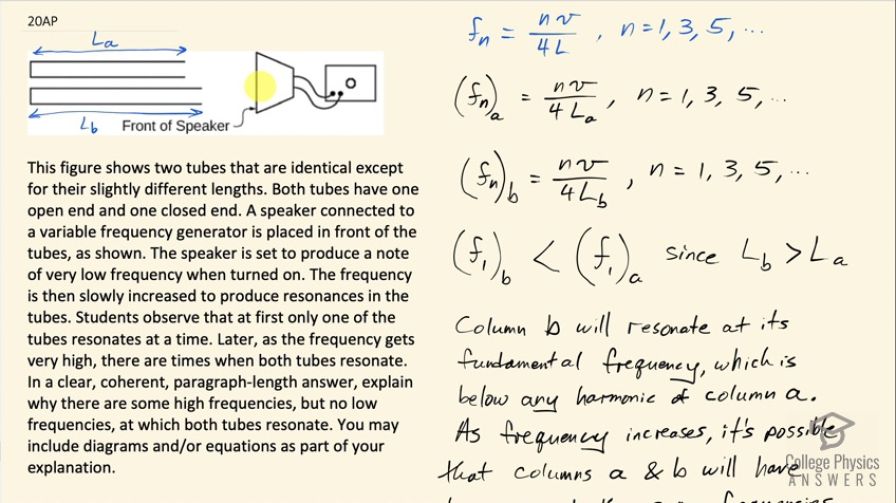Question
Figure 17.58 This figure shows two tubes that are identical except for their slightly different lengths. Both tubes have one open end and one closed end. A speaker connected to a variable frequency generator is placed in front of the tubes, as shown. The speaker is set to produce a note of very low frequency when turned on. The frequency is then slowly increased to produce resonances in the tubes. Students observe that at first only one of the tubes resonates at a time. Later, as the frequency gets very high, there are times when both tubes resonate.

Final Answer
Please see the solution video.
Solution video
OpenStax College Physics for AP® Courses, Chapter 17, Problem 20 (Test Prep for AP® Courses)

vote with a rating of
votes with an average rating of
.
Video Transcript
This is College Physics Answers with Shaun Dychko. We have a speaker hooked up to a tone generator and it begins at a really low frequency and then gradually increases its frequency of sound produced and in front of it are two tubes that are closed at one end and the tubes have different lengths— tube B has a greater length than tube A. Now the formula for the resonant frequency in tube closed at one end is n times the speed of sound divided by 4 times its length where n is an odd integer so 1, 3, 5 and so on. So the resonant frequencies for column A is nv over 4 times length a and then for b, it's same formula but with length b now because b has a greater length, if you consider the fundamental which is the very first resonant frequency or the lowest possible resonant frequency for column b that's going to be a lower frequency than the fundamental for column a because the denominator here is bigger and so this quotient will be smaller than this quotient when they each have n equals 1. Okay so that explains why column b resonates first and then as the frequency is increased further still, it's noticed that there are some frequencies where both tubes resonate and so now we'll have to explain that. As the frequency goes up, it's possible that some harmonics for the two different columns will have the same frequency and so when they are both resonating that's where you are seeing is that the harmonics are you have finally reached some harmonic that is the same for both columns but the value of n will be different in that case. Okay... I think that's good enough!